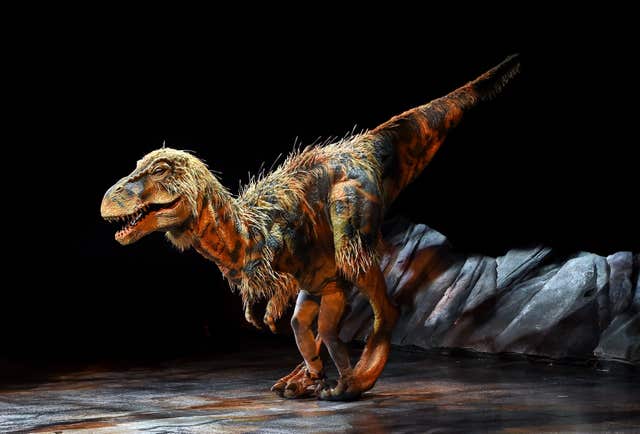Tyrannosaurus rex youngsters may have wiped out medium-sized dinosaurs – study
New research suggests that as T-rex rose to dominance, their young took over the ecological role of middle-sized predators.

Fast and agile, Tyrannosaurus rex juveniles were able to outcompete other medium-sized dinosaurs and drive them to extinction as the species became more dominant, scientists believe.
Previous research has suggested that these predators disappeared about 80 million years ago due to a lack of prey but a new study, published in the Canadian Journal of Earth Sciences, suggests young tyrannosaurs may be to blame.
Thomas Holtz, a principal lecturer in the University of Maryland’s department of geology in the US, said: “Earlier in the history of dinosaurs, in most communities you’d have a bunch of different types of carnivores of various size ranges from small fox-sized all the way up to the occasional giants.
“Then something happens between 95 and 80 million years ago, where we see a shift.
“The really big carnivores, larger than an elephant, like tyrannosaurs and their kin, become the apex predators, and the middle-sized predators, say leopard to buffalo-sized carnivores, are either missing or very rare.”
For their study, the researchers looked at an existing record of 60 dinosaur communities that roamed the planet around 201 to 66 million years ago.
Analysis showed that in 29 of these communities, T-rex were the largest and most dominant predator, weighing in at over 1,000kg.
In those communities, found in central Asia and North America, middle-sized predators, ranging from 50kg to 1,000kg, were rare or absent around 80 to 66 million years ago, the researchers said.

Mr Holtz and his team then looked for shifts in the number of prey species in those communities, to see if the disappearance of these dinosaurs was linked to changes in their prey.
Specifically, they were looking for two types of changes: prey species increasing dramatically in the absence of predators, or prey species dropping off leading to a disappearance in medium-sized predators.
But the researchers did not find any evidence of changes in prey species diversity, which suggests “something continued to fill the ecological role of the missing middle-sized predators”.
They believe young tyrannosaurs, who were faster and more agile than their parents, likely hunted prey in a similar way to medium-sized dinosaurs.
As a result, the researchers say it is possible that as T-rex evolved and grew to dominance, their juveniles outcompeted other carnivorous dinosaurs in the middle-size range.
Mr Holt said: “In those communities where middle-sized predators are gone but the prey species are just as diverse, can we say that no-one is preying upon these middle-sized prey?
“No. That’s almost certainly not the case.
“It is quite likely juvenile tyrannosaurs took over the ecological role of the missing middle-sized carnivores.”
An alternative explanation may also be possible: something else eliminated the other carnivores and T-rex simply stepped in to fill the gap. More research was needed to understand what happened.
Mr Holtz said: “Ultimately resolving that is going to rely on the most basic first-level aspect of palaeontology, which is boots-on-the-ground and picks in the sediments.
“We need more sampling sites from this interval between about 95 and 80 million years ago.”





